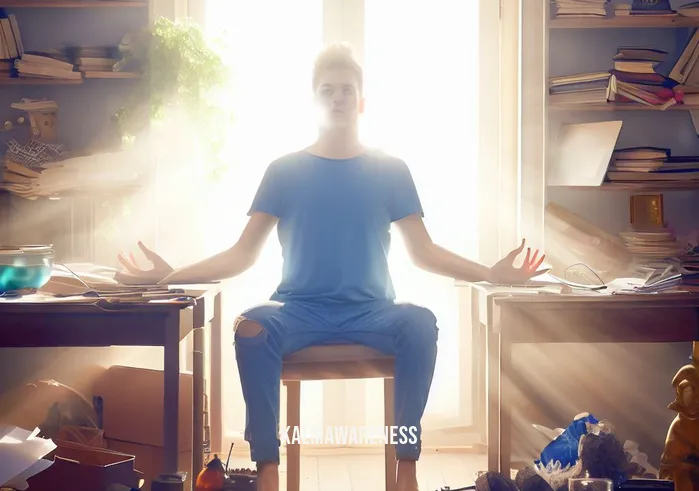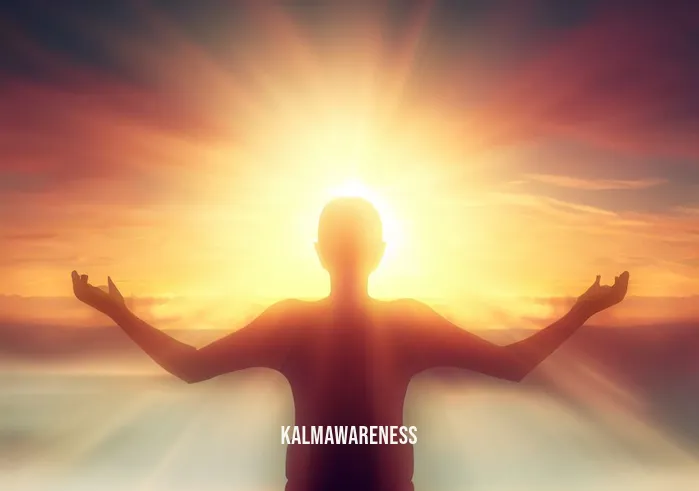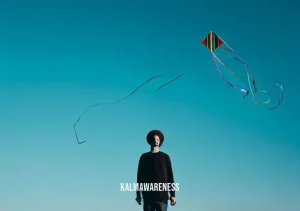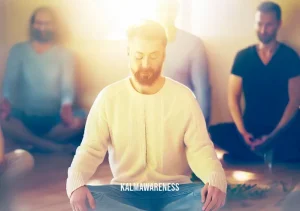The Fundamentals of Fear Meditation: An Introduction to a Transformative Practice
Fear is an emotion as ancient as humanity itself. Rooted in our primal need for survival, fear serves a purpose—to alert us to dangers and propel us into action. Yet, for many of us, fear takes on a form far more nebulous and unsettling than that of a predator in the wilderness. It manifests as anxiety, phobias, and a plethora of psychological and emotional strains that make day-to-day life a constant struggle. How do we navigate this maze of apprehension and unrest? The answer lies in a transformative technique known as fear meditation, which blends the wisdom of ancient practices with the insights of modern psychology.
The Anatomy of Fear and Its Role in Anxiety
To understand the potency of fear meditation, we must first examine fear itself. Fear is not merely an emotion; it is a complex biochemical response. When confronted with a perceived threat, our adrenal glands release a surge of hormones like adrenaline, preparing us for the quintessential “fight or flight” response. Yet, when these natural mechanisms malfunction, or when our brains perceive threats that are more psychological than tangible, we encounter problems such as generalized anxiety disorder or phobias. Rouse Yoga emphasizes the role of physiological relaxation in counterbalancing this biochemical frenzy. Yoga is one way to stabilize this system, but when combined with fear meditation, the effect can be doubly calming. Understanding how to spell “stabilize” is less important than knowing how to achieve it mentally and physically.
The Power of Mindfulness in Confronting Fear
Mindfulness, a term that has its roots in ancient Buddhist practices, is a crucial element in fear meditation. Simply put, mindfulness involves attaining a peaceful state of mind, in which your thoughts are not occupied by worry. This peaceful state permits you to detach from anxious thoughts and gain a new perspective on your fears. Think of it as a momentary pause button, giving you the opportunity to halt the cycle of stress and take control.
How Does Fear Meditation Work?
Fear meditation is not just about suppression; it’s about transformation. It incorporates aspects of mindfulness, guided visualization, and introspection, making it a holistic approach to overcoming fear. To some extent, it involves elements of sustainable self-care, where the emphasis is not just on momentary relief but long-lasting change.
- Begin with Breathing: Focusing on your breath is a foundational step. It’s an element of some meditation exercises that helps ground you in the present.
- Identify Your Fear: Recognize the fear you want to work on. Put a label on it.
- Visualization: Imagine a scenario where you confront this fear. Visualize overcoming it.
- Mindful Reassessment: Analyze the fear without judgement. This is the time to apply what is known as the judgement of the wise, examining your fears without attaching emotion to them.
- Return to Reality: Slowly bring yourself back to your physical surroundings.
“The goal is to train your mind to be stronger than your feelings, empowering you to face life’s challenges head-on,” says Jack Kornfield.
Is Lying Down an Option?
A common question is, can you meditate lying down? The answer is yes. The position of your body is less important than the state of your mind. Whether seated in a yoga pose, lying down, or engaging in mindful movement, the key is to maintain a posture that facilitates concentration and relaxation.
In conclusion, fear meditation is not just a practice but a transformative journey. It equips you with the tools to confront and overhaul your fears, offering not just a moment of relief but a lifetime of resilience. If you’re intrigued by how to further integrate fear meditation into your lifestyle and how it can evolve into other forms of meditative and mindful practices, continue reading in the next chapter.

Fear Meditation Techniques: A Deep Dive into Practical Approaches
If you’ve made it to this chapter, you’re probably already aware of the transformative impact that fear meditation can bring to your life. In this chapter, we’ll go beyond the fundamentals, diving deeper into specific techniques, methods, and frameworks that can elevate your practice of fear meditation. We’ll also address some of the questions that may be lingering in your mind, like “How can I apply this to my unique fears?” or “How do I actually go about practicing fear meditation?”
Selecting a Technique that Resonates with You
One of the beautiful aspects of fear meditation is its flexibility. Whether you’re walking as a teenager and dealing with social anxiety or well into your adult years facing a deep-rooted phobia, the practice can be tailored to meet your needs. A crucial step in the journey of overcoming fear is to select a technique that resonates with you. This could range from mirror gazing to understand self-love and conquer self-doubt, to more intensive techniques like mindful hypnobirthing for mothers-to-be who may be experiencing pre-birth anxiety.
Bullet Points: Fear Meditation Techniques
- Mirror Gazing: A technique that taps into the spiritual benefits of seeing beyond the physical self.
- Gratitude Meditation: Shift focus from fear to positivity by embracing gratitude before sleep.
- Mindfulness-based Stress Reduction (MBSR): A structured program that combines mindfulness and fear meditation, aiming for an integrated approach to treating anxiety.
- Breath Work: Often underestimated but immensely powerful, focusing on the breath is a cornerstone in many meditation exercises.
Comparing Techniques: A Quick Guide
| Technique | Target Audience | Related Link |
|---|---|---|
| Mirror Gazing | Individuals with self-esteem issues | Spiritual Benefits |
| Gratitude Meditation | General public, good for shifting mindset | Before Sleep |
| MBSR | Individuals with chronic stress or anxiety | Mindfulness-Based Stress Reduction |
| Breath Work | Everyone, especially beginners | Element of Some Exercises |
The Role of Consistency and Adaptability
Meditation is simple, but it’s not necessarily easy, especially when it involves confronting fears. One of the key factors that determine the success of your fear meditation journey is consistency. After all, if we’re talking about transformation, we should be considering something that you can incorporate into each blessed day of your life. However, don’t overlook the power of adaptability. Meditation should not become a monotonous chore but should be a pretty soon meaning a part of your life that you look forward to.
Is Fear Meditation All I Need?
As powerful as it is, fear meditation is often most effective when integrated with other forms of self-care and personal growth initiatives. It can provide immense value but should not be viewed as a standalone solution for deep-seated psychological issues. In some cases, medical treatment or psychotherapy may also be essential components of an integrated approach to overcoming fear and anxiety. Always keep this in mind as you assess your overall well-being.
Coming up in the Next Chapter
In the next chapter, we’ll delve into the physiological impacts of fear meditation. How does it actually alter your brain and body chemistry to relieve anxiety and build resilience? We’ll also cover how you can measure your progress and success in your fear meditation practice. If you’ve ever wondered why and how fear meditation can get you deep so fast, you won’t want to miss what’s coming next.
So, are you ready to continue your journey into the transformative world of fear meditation? If the answer is yes, keep reading.
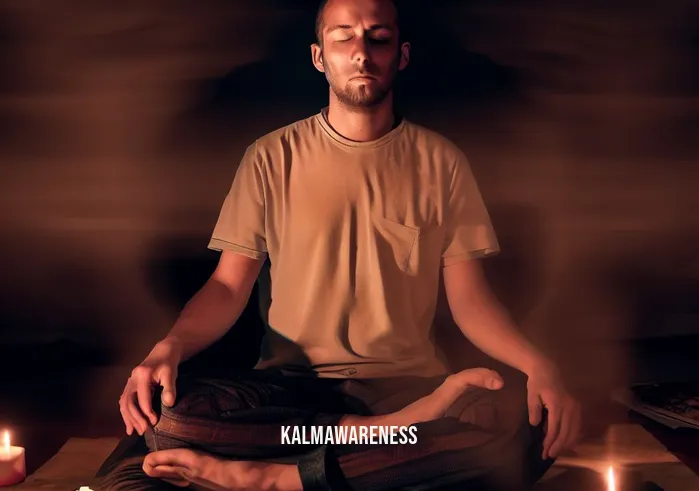
Seeds of Hope: Finding Inspiration Through Fear Meditation
If you’ve followed along so far, you’ve probably started to grasp the impact that fear meditation can have in overcoming deeply rooted phobias, anxieties, and stress. We’ve explored different techniques, delved into the science, but what we haven’t tackled yet is the emotional fuel that keeps the engine of transformation running: inspiration and hope. In this chapter, we’ll explore the ways in which fear meditation can become a source of inspiration, enabling us to tackle challenges with newfound hope and courage.
Quotable Insights for Your Journey
“You gain strength, courage, and confidence by every experience in which you really stop to look fear in the face.”
– Eleanor Roosevelt
This quote aptly summarizes the essence of fear meditation. It’s not just a practice of calming your nerves, but a journey towards self-empowerment. While you’re aiming to train your mind to be stronger than your feelings, you are also unlocking the courage within you.
“The only thing we have to fear is fear itself.”
– Franklin D. Roosevelt
The process of fear meditation allows you to dissect the root cause of your fears, helping you attain a peaceful state of mind. This process echoes the wisdom contained in this timeless quote, underscoring the notion that the emotion of fear is often the most paralyzing aspect of any challenge.
“Hope is the thing with feathers that perches in the soul.”
– Emily Dickinson
By taking up the practice of fear meditation, you’re nurturing that ‘thing with feathers’ within you. Hope doesn’t just flutter away; it sticks around, grows, and becomes a sustainable form of self-care.
Making Hope Tangible through Fear Meditation
While hope and inspiration may seem intangible, their impacts are incredibly real. How exactly does fear meditation translate these ethereal concepts into actionable courage?
Drawing from Wise Judgements
Fear often distorts our thinking, making us see problems as insurmountable. Fear meditation encourages you to adapt a judgement of the wise, a discerning viewpoint that allows you to disentangle fact from fiction, to see the mountain as a series of manageable slopes rather than an unconquerable peak.
Being Present
The practice of mindfulness, which is often integrated into fear meditation, teaches you to be present. Your focus sharpens, your fears about what might happen or what has happened dissipate, and suddenly, you find the courage to face whatever is before you. After all, courage and bravery are born from a mind not occupied by worry.
Yoga and Body Awareness
Believe it or not, the benefits of fear meditation can be enhanced when combined with other forms of mindfulness activities, like rouse yoga. This fusion not only boosts your physical health but also harmonizes your mind-body connection, amplifying your inner reservoir of courage and hope.
Journeying Forward: What’s Next?
Now that you’ve discovered the inspirational potential of fear meditation, you might be wondering, “What else can it do for me?” In our next chapter, we’ll take an intriguing twist and explore how fear meditation can significantly influence your day-to-day actions, allowing you to live in greater alignment with your values. We’ll look at real-world applications and even delve into some mindful movements that can augment your meditation practice.
So, are you ready to discover how fear meditation can translate into actionable life changes? If the answer is yes, then please, continue reading.
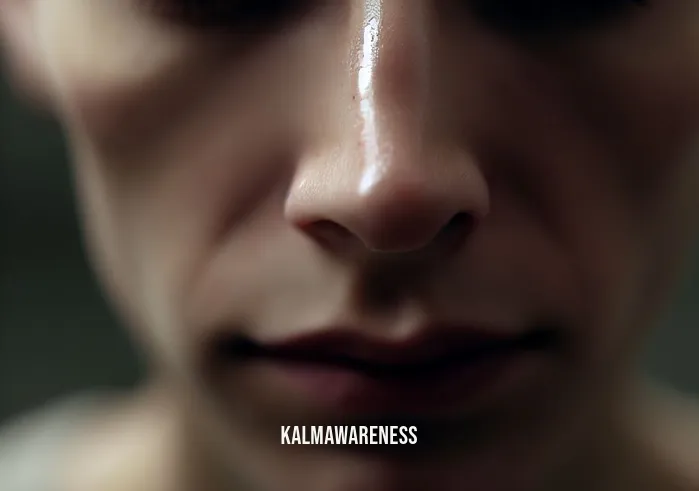
The Anatomy of Courage: Breaking Down Fear Meditation
We’ve journeyed through the landscapes of fear meditation, gleaning its significance, digging deep into its techniques, and finding inspiration. Now, let’s dissect this intriguing practice, breaking it down into digestible elements that make up the whole. We’ll take a more systematic approach to understand what fear meditation really involves and how it intertwines with our daily lives.
Building Blocks of Fear Meditation
Core Elements
- Intentionality: At the very root is the willingness to face fear.
- Mindfulness: This is about being in the present moment, letting go of judgements and distractions.
- Breathing: Your breath serves as the anchor that stabilizes your emotions and thoughts.
- Visualization: Often an element of some meditation exercises, this helps reframe fear scenarios.
- Affirmation: Positive self-talk to realign thoughts and build courage.
Techniques Involved
- Body Scan: As you get into the meditation, you may start by touching various parts of your body in awareness.
- Counting Breath: Involves counting each breath to sharpen your focus.
- Mirror Gazing: Surprisingly, looking at oneself can be empowering, revealing your true self beyond fears.
The Daily Routine: Integrating Fear Meditation
If you’re wondering how to include this practice into your daily life, it’s easier than you think.
- Morning Affirmations: Begin your day with positive affirmations, a reminder of your daily blessings.
- Mindful Commute: Whether you’re walking or driving, seize those moments to be present.
- Mini-Meditations: These are quick 5-minute sessions that you can fit in throughout your busy day. Ideal for when you need to regain composure or need a moment of calm.
- Bedtime Rituals: End your day with a gratitude meditation before sleep, recounting the positives and the lessons learned from the day’s challenges.
Experts’ Take on Fear Meditation
If you’re still skeptical, it may be reassuring to know that experts in the field of mindfulness and meditation also vouch for these techniques. For instance, the renowned Jack Kornfield has simplified the concept of fear meditation in his guide Meditation for Beginners.
Unlocking a Life of Freedom
There’s a beautiful simplicity in practicing fear meditation. It might seem daunting initially, but once you break it down, the picture becomes much clearer. This form of meditation is not just about eliminating fear; it’s about embracing life with courage and mindfulness.
What’s Coming Next?
By now, you’ve gained a comprehensive understanding of fear meditation, its components, and its integration into everyday life. But what’s next? How do you sustain this practice in the long term? Our final chapter will answer those questions, offering a roadmap for long-term success and benefits. Expect to explore some overlooked aspects that could be your key to a life less ruled by fear and more driven by courage and freedom.
Curious about making fear meditation a long-term commitment? Then don’t hesitate—continue reading.

Embracing Tranquility: The Last Word on Fear Meditation
We’ve come a long way, haven’t we? From understanding the very essence of fear meditation to diving into its techniques and gleaning inspiration, it’s been quite the journey. As we approach the conclusion, let’s take a moment to reflect on the key takeaways and inspire a proactive approach towards adopting this life-altering practice.
The Quintessence of Fear Meditation
Fear meditation is not simply a stress-reducing technique but a transformative pathway to rediscover one’s true self. We’ve already explored how critical it is to train your mind to be stronger than your feelings, and fear meditation offers precisely that avenue. It teaches you to reach a peaceful state of mind in which you’re not overrun by anxiety or fear. In this zen state, you can evaluate situations more realistically, allowing room for courage and resilience to flourish.
Revisiting the Highlights
- Awareness & Mindfulness: Learning to be in the moment and appreciate what you have through sustainable self-care.
- Breathing Techniques: The cornerstone that can help you meditate even when lying down.
- Visual Exercises: Employing imagination and positive reinforcement to tackle fear head-on.
- Routine Integration: Making fear meditation a daily habit that naturally blends into your lifestyle.
The Happiness Factor
Fear meditation is often synonymous with unlocking happiness. Imagine a life where you’re not always rushing, but enjoying every moment. Where you’re not plagued by anxiety, but brimming with courage and mindfulness.
The Next Step: Your Fearless Life Awaits
By now, you’re equipped with the tools you need to live a less fear-driven and more empowered life. But don’t stop here. Revisit the previous chapters if you need to, or explore more on mindful hypnobirthing or rouse yoga—other techniques that also emphasize mindfulness and overcoming fears.
Thank You for Journeying with Us
We’re deeply grateful that you’ve spent time with us, exploring the multifaceted world of fear meditation. This has just been a glimpse, and we assure you there’s much more to discover in future editions. Remember, courage doesn’t mean the absence of fear; it’s the triumph over it. Fear meditation is your guide to that triumph.
A Call to Action
As we say goodbye—for now—why not make a commitment to start practicing fear meditation? The benefits are endless, and the ripple effect on your mental and emotional well-being is unparalleled. Remember to keep an eye on our upcoming content, filled with equally enriching insights and tips.
Your journey to a fearless life has just begun. Ready for what comes next? Keep exploring and stay tuned.
